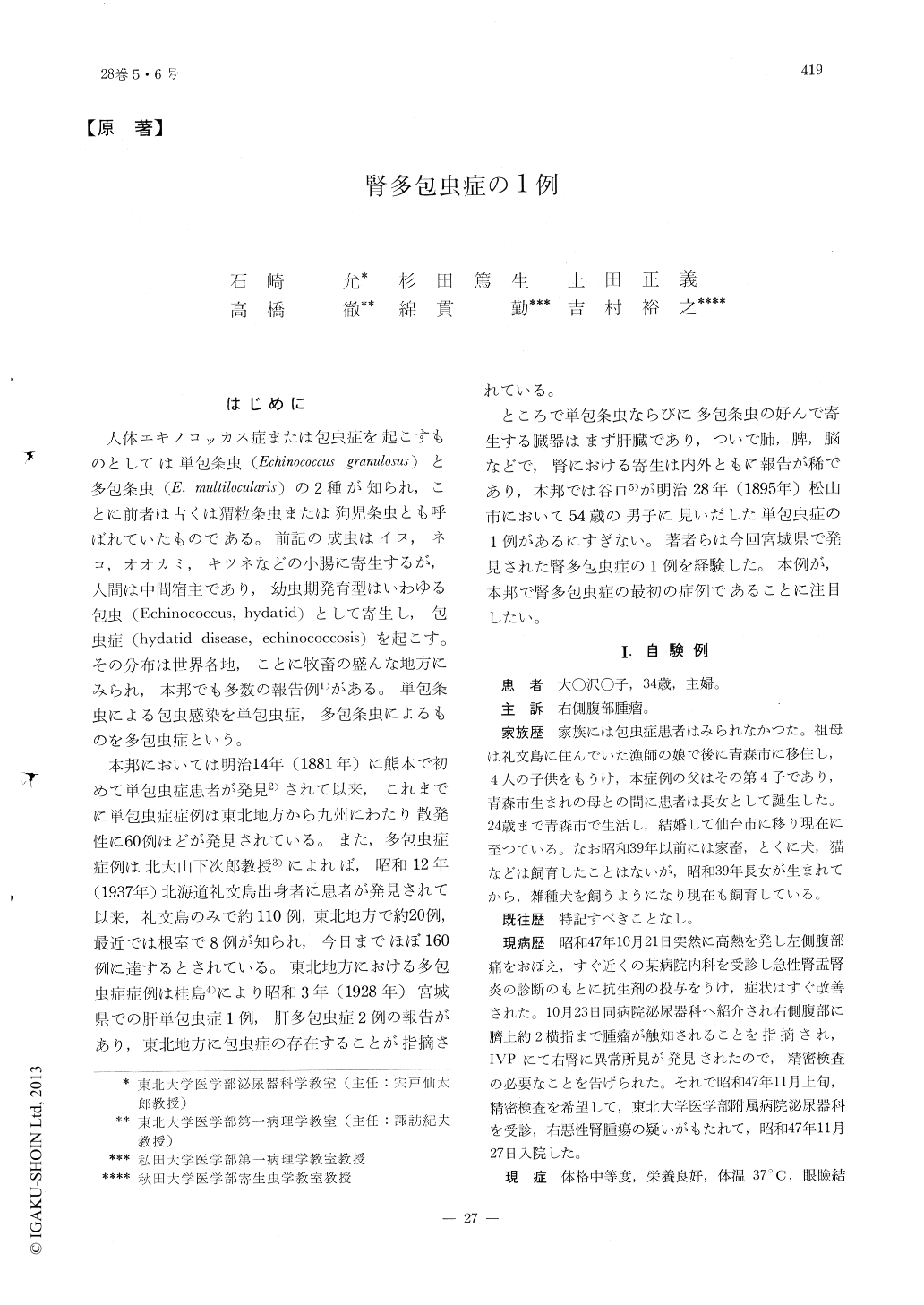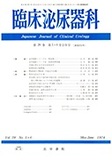Japanese
English
- 有料閲覧
- Abstract 文献概要
- 1ページ目 Look Inside
はじめに
人体エキノコッカス症または包虫症を起こすものとしては単包条虫(Echinococcus granulosus)と多包条虫(E.multilocularis)の2種が知られ,ことに前者は古くは猬粒条虫または狗児条虫とも呼ばれていたものである。前記の成虫はイヌ,ネコ,オオカミ,キツネなどの小腸に寄生するが,人間は中間宿主であり,幼虫期発育型はいわゆる包虫(Echinococcus, hydatid)として寄生し,包虫症(hydatid disease, echinococcosis)を起こす。その分布は世界各地,ことに牧畜の盛んな地方にみられ,本邦でも多数の報告例1)がある。単包条虫による包虫感染を単包虫症,多包条虫によるものを多包虫症という。
The cases of hydatid disease reported from Japan are about 60 cases by Echinococcus granulosus and 160 cases by Echinococcus multilocularis. The most favourite parasitic site of hydatid is the liver followed by lung, spleen and brain, and only few cases, of the kidney are reported from abroad. A case reported by Taniguchi (1895), in Japan, was a 54 year old male from Matsuyama City, who had Echinococcus granulosus in the kidney. The first case with Echinococcus multilocularis in the kidney was discovered from Miyagi Prefecture, Japan and reported in this paper.

Copyright © 1974, Igaku-Shoin Ltd. All rights reserved.


